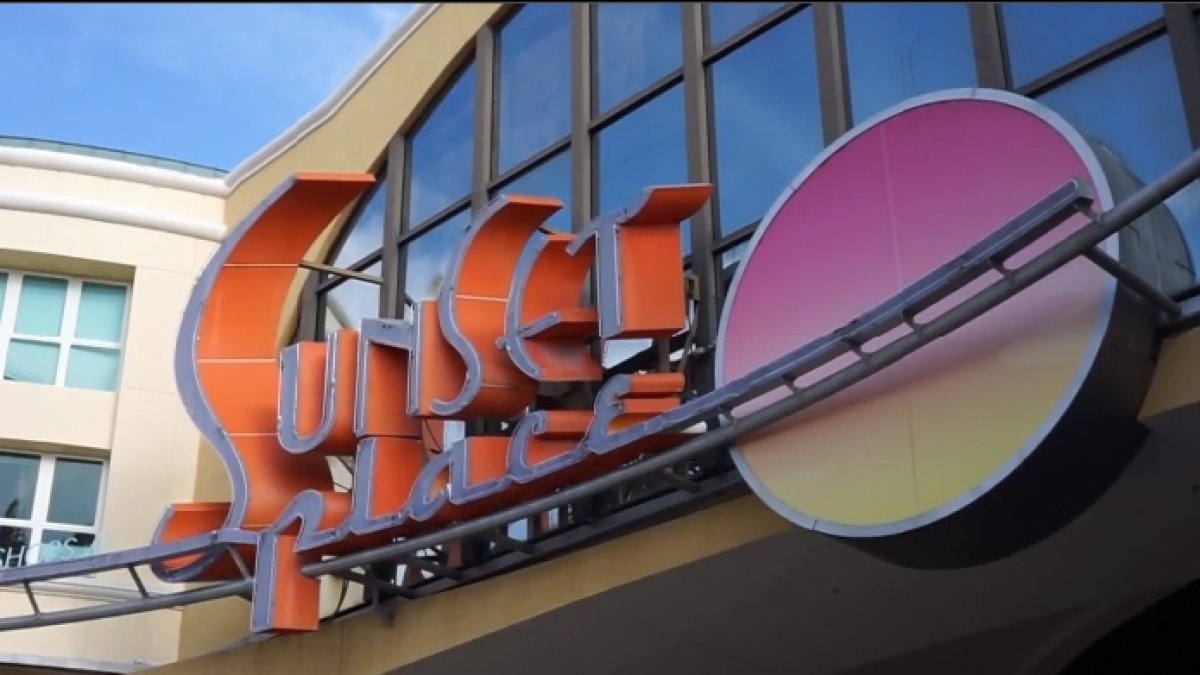Shopping malls converted into residential units in South Florida – NBC 6 South Florida
Miami’s housing inventory remains around 37% below our regions historical average, according to a March report by Norada Real Estate Investments.
Simply put- we don’t have enough houses.
So how do we create more living space to meet demand? A new solution has been in the works across Miami-Dade County and it starts with shopping malls!
Off of South Dixie Highway and Red Road, is Sunset Place. Since it opened in 1999, it was known as a bustling mall offering food, dining and fun.
But now, it’s desolate. A virtually empty building with no foot traffic.
“It’s no longer that we are going to depend on just retail outlets to bring people, we need more things to come to the community,” said realtor Bryan Gorrita.
Gorrita has worked in the real estate industry for five years with over 20,000 followers on Instagram, and shares his insight on all new real estate ventures and changes happening in Miami.
He’s been staying up to date on all the latest shopping mall redevelopments, including this one.
“From my understanding, they are still working out and fine tuning what the overall plan will look like. The local government has made it clear they want to redevelop this. It’s currently an eyesore and there’s so much potential.”
Midtown Equities are the developers of the project. NBC6 attempted to reach out to them multiple times, but have not heard back via phone or email at the time of this report.
But information on what the project could look like is still in the works.
The City of South Miami says they are waiting on the developers to submit their plans to the city, but they are anticipating mixed use, residential and food and beverage offerings. Meaning, that the project will have units incorporated into the site.
Going south to Cutler Bay there’s another project.
Southland Mall is already being redeveloped into Southplace City Center.
According to the town of Cutler Bay’s website, what’s now a construction site will soon be converted into 4,000 residential units, 500,000 square feet of retail, 150,000 square feet of food and beverage options, a 150-key hotel, 60,000 square feet of medical office space and an amphitheater.
The site should be completed by 2029 with the first rental properties being available in early 2025, creating roughly 2,700 new jobs.
The town of Cutler Bay reached out to NBC6 after the piece aired to provide updated numbers. As of April, the project will have 5,000 units. They furthered that they do not have a new completion date. While they anticipated groundbreaking on the first residential building last year, they do not have a revised timeline for when a groundbreaking will take place.
“If you are a resident living down south, why do you have to drive hours and hours to Brickell or Wynwood when you could have those same high-quality amenities and attractions right in your own location,” said Gorrita
This move from sole retail spaces to mixed-use buildings is expected to be the future.
“This is happening because there’s a huge demand for this. People want to work, live, and play all in the same place. And they want to make it so that the communities involved,” Gorrita explained.
According to Forbes, the Urban Land Institute and National Multifamily Housing Council Research Foundation estimates that there is 1 billion square feet of obsolete retail in the US.
In an analysis done by JLL of 135 mall redevelopment projects in the country, over 50% include housing. But these shopping malls aren’t just becoming residential spaces, 85% of the projects in the analysis will retain retail on site.
Why could a mall flip be a good move?
“A lot of those shopping malls are in high traffic areas and they are in demand. so they are well located,” said Dr. Eli Beracha, Director of Hollo’s School of Real Estate at Florida International University.
He explained that because of the rise of online shopping, brick and mortar malls will soon become fewer and fewer. While the empty lots might be considered for mixed-use space because of their prime location, putting the idea into action isn’t that simple.
“You have to remember that this is not that we are taking the space, and we are changing the inside. In a lot of cases, you are knocking the space and you are rebuilding from zero. It’s extremely, extremely difficult to convert a shopping mall into residential space just by altering space,” Beracha said.
“Same thing with office space, the configuration, the way electricity flows, water sewage etc. It’s just not suitable for real estate in its current state. So, in many cases you need a complete rebuild, it’s not an alteration,” he added.
The site plans for these projects are trying to incentivize Miami residents by promising a ‘mini city’ or ‘destination’, phrases that advertise a mini metropolis that is just steps away.
Some sites like Palms at Town and Country are doing just that.
They recently announced they are turning the Kohls building into 12 story apartment buildings.
“For now, in order to meet the community needs, we are going to have to go up,” said Gorrita.
“And that is the only option right now especially for a city that is growing. Is this a bad thing or a good thing? I don’t think it is bad or good, I just think this is the new iteration that Miami is destined to become and we have to be prepared for it.”
Gorrita explains that lack of housing has been a continuous issue in Miami-Dade County and malls might be the only creative solution to use land we already have.
“Unfortunately, Miami has an issue when it comes to the availability of land, where we are pretty much land locked. To the West we have the Everglades, the East is the beach, and to the South is the Keys and there’s not enough available real estate for people to develop, and that’s why you are seeing malls like this that become habitats to sustain populations and they become work centers and living centers and just everything.”
The big question is how much will these rental units and apartments be?
“You got to put yourself in the shoes of the developer. If you are buying in a high price area, you need to make a margin, you need to make you ROY back. In those areas you are still going to see high price luxury rental units that are going to come,” he states.
Gorrita explains, “Of course, there are incentives like the Live Local Act that allows developers and local leaders to rezone industrial areas, malls, so you can increase density and create more workforce housing and affordable housing for residents. But unfortunately, from what I have been seeing here, we are going to see a lot more rental communities, and a lot of these are going to be for rent.”



